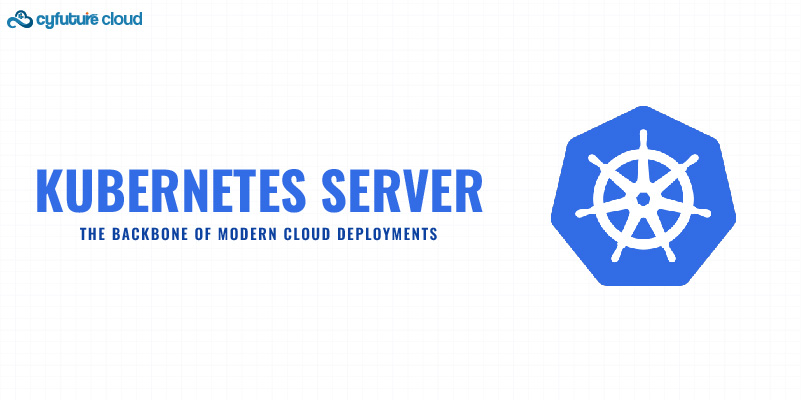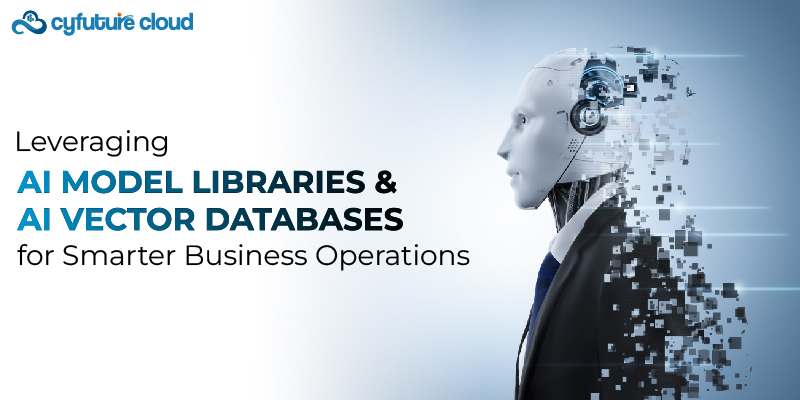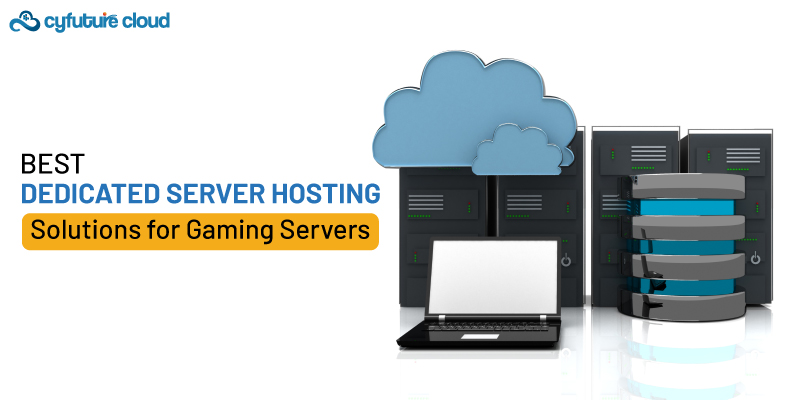Table of Contents
Low-code and no-code cloud services are revolutionizing software development by empowering non-technical users to create and deploy applications swiftly, without extensive coding. These cloud-based platforms streamline development, offering a spectrum of tools that simplify the creation of software solutions.
According to a MarketsandMarkets report, the global market for low-code development platforms is projected to surge from $7.8 billion in 2020 to $45.8 billion by 2025, at a remarkable CAGR of 42.9%.
This growth is driven by the escalating demand for rapid application development, a shortage of developers, and the necessity to lower costs.
Cloud low-code and no-code cloud platforms offer numerous benefits, including enhanced efficiency, increased productivity, cost savings, and seamless integration with cloud computing. This blog post will provide a comprehensive overview of low-code and no-code cloud services, covering their definitions, examples, advantages, use cases, and key differences.
We will also offer insights into choosing between low-code and no-code cloud solutions and explore the future trajectory of these innovative platforms.
What are Low-code and No-code Cloud Services?
Low-code and no-code cloud services are platforms that allow users to build and deploy software applications without having to write extensive amounts of code. Low-code platforms provide a visual development environment with pre-built templates and drag-and-drop functionality, while no-code media take it a step further and require no coding knowledge at all. Both types of platforms are designed to enable non-technical users to create and deploy applications quickly and easily. They are often used for creating business-specific applications such as workflow automation and data management systems.
Low-code and no-code cloud services are designed to make it easy for non-technical users to create and deploy software applications without having to write extensive amounts of code. These platforms provide a visual development environment that makes it easy to build and customize software applications, and they are often used to create business-specific applications such as workflow automation and data management systems.
Low-code platforms provide a visual development environment that includes pre-built templates and drag-and-drop functionality. These platforms typically require some coding knowledge, but they abstract away much of the complexity of traditional software development, allowing users to focus on the functionality of the application rather than the underlying code. Low-code platforms often include a wide range of pre-built connectors and integrations, making it easy to connect to existing systems and data sources.
No-code platforms take this one step further, requiring no coding knowledge at all. They provide a visual development environment that allows users to build and customize software applications using drag-and-drop functionality and pre-built templates. No-code platforms are often used for creating simple applications such as forms, surveys, and databases.
Both low-code and no-code cloud services are designed to enable non-technical users to create and deploy applications quickly and easily. They are often used by businesses to automate processes, manage data, and improve efficiency. They also allow organizations to leverage the power of cloud computing to build and deploy applications at scale, with the ability to easily scale resources up or down as needed.
Why these Types of Services are Becoming Increasingly Popular?
Low-code and no-code cloud services are becoming increasingly popular for a variety of reasons, including:
– Increased Efficiency: These platforms allow non-technical users to create and deploy software applications quickly and easily, without having to write extensive amounts of code. This can increase efficiency and reduce the time and resources required to build and deploy applications.
– Improved Productivity: Low-code and no-code platforms enable businesses to automate processes, manage data, and improve efficiency, allowing employees to focus on more strategic tasks.
– Cost Savings: Building and maintaining software applications can be costly, but low-code and no-code cloud services can help organizations to reduce costs by enabling non-technical users to build and deploy applications without the need for specialized development resources.
– Access to Cloud Computing: Low-code and no-code cloud services provide organizations with the ability to leverage the power of cloud computing to build and deploy applications at scale, with the ability to easily scale resources up or down as needed.
– Business agility: With the fast-paced business environment, organizations need to be able to adapt quickly to changing requirements and markets. Low-code and no-code platforms provide the flexibility and agility that organizations need to respond quickly to new opportunities and challenges.
– Responding to the shortage of developers: As businesses are increasingly digital, the demand for software developers is growing, and there’s a shortage of qualified developers, making it hard for companies to find and retain the talent they need. Low-code and no-code platforms provide a solution to this problem by allowing non-technical users to build and deploy applications without the need for specialized development resources.
Overall, low-code and no-code cloud services are becoming increasingly popular due to the increased efficiency, improved productivity, cost savings, and access to cloud computing they provide, as well as the ability to respond to the fast-paced business environment and shortage of developers.
Low-Code Services
Low-code cloud services are platforms that allow users to build and deploy software applications without having to write extensive amounts of code. They provide a visual development environment that makes it easy to build and customize software applications, and they are often used to create business-specific applications such as workflow automation and data management systems.
Low-code platforms provide a visual development environment that includes pre-built templates and drag-and-drop functionality. These platforms typically require some coding knowledge, but they abstract away much of the complexity of traditional software development, allowing users to focus on the functionality of the application rather than the underlying code. Low-code platforms often include a wide range of pre-built connectors and integrations, making it easy to connect to existing systems and data sources.
Low-code platforms are designed to be user-friendly and accessible to non-technical users, such as business analysts, process managers, and other business users. They allow non-technical users to create and deploy applications quickly and easily, without the need for specialized development resources. This can increase efficiency and reduce the time and resources required to build and deploy applications.
Low-code cloud services also allow businesses to leverage the power of cloud computing to build and deploy applications at scale, with the ability to easily scale resources up or down as needed. They also often provide features such as version control, collaboration tools, security and compliance, monitoring, and analytics.
Low-Code Cloud Platforms
There are several popular low-code cloud platforms available, including:
– Salesforce Lightning: Salesforce Lightning is a low-code platform that allows users to build and customize business applications on the Salesforce platform. It includes a visual development environment with drag-and-drop functionality, pre-built templates, and a wide range of pre-built connectors and integrations.
– PowerApps: PowerApps is a low-code platform from Microsoft that allows users to create custom business applications for web and mobile devices. It includes a visual development environment with drag-and-drop functionality, pre-built templates, and a wide range of pre-built connectors and integrations.
– Appian: Appian is a low-code platform that allows users to create business-specific applications such as workflow automation and data management systems. It includes a visual development environment with drag-and-drop functionality, pre-built templates, and a wide range of pre-built connectors and integrations.
– Mendix: Mendix is a low-code platform that allows users to create custom business applications for web and mobile devices. It includes a visual development environment with drag-and-drop functionality, pre-built templates, and a wide range of pre-built connectors and integrations.
– OutSystems: OutSystems is a low-code platform that allows users to create custom business applications for web and mobile devices. It includes a visual development environment with drag-and-drop functionality, pre-built templates, and a wide range of pre-built connectors and integrations.
– Zoho Creator: Zoho Creator is a low-code platform that allows users to create custom business applications for web and mobile devices. It includes a visual development environment with drag-and-drop functionality, pre-built templates, and a wide range of pre-built connectors and integrations.
Advantages of Using Low-Code Cloud Services
There are several advantages to using low-code cloud services, including:
– Increased Efficiency: Low-code cloud services allow non-technical users to create and deploy software applications quickly and easily, without having to write extensive amounts of code. This can increase efficiency and reduce the time and resources required to build and deploy applications.
– Improved Productivity: Low-code platforms enable businesses to automate processes, manage data, and improve efficiency, allowing employees to focus on more strategic tasks.
– Cost Savings: Building and maintaining software applications can be costly, but low-code cloud services can help organizations to reduce costs by enabling non-technical users to build and deploy applications without the need for specialized development resources.
– Access to Cloud Computing: Low-code cloud services provide organizations with the ability to leverage the power of cloud computing to build and deploy applications at scale, with the ability to easily scale resources up or down as needed.
– Business agility: Low-code cloud services provide the flexibility and agility that organizations need to respond quickly to new opportunities and challenges.
– Responding to the shortage of developers: With the shortage of qualified developers, low-code cloud services provide a solution to this problem by allowing non-technical users to build and deploy applications without the need for specialized development resources.
– Collaboration: Low-code platforms provide collaboration features that allow teams to work together on building and deploying applications, with version control, commenting, and approval workflows.
– Security and compliance: Low-code cloud services typically provide security and compliance features to ensure that applications are built and deployed according to industry standards and regulations.
– Monitoring and analytics: Low-code platforms often include monitoring and analytics features that provide insight into the performance and usage of applications, helping organizations to optimize and improve their operations.
Use Cases for Low-code Cloud Services
Low-code cloud services can be used for a wide range of use cases, including:
– Workflow Automation: Low-code platforms can be used to automate repetitive business processes, such as onboarding new employees, approving purchase orders, and processing invoices.
– Data Management: Low-code platforms can be used to create custom databases and data management systems, such as customer relationship management (CRM) systems, inventory management systems, and asset tracking systems.
– Business Intelligence and Analytics: Low-code platforms can be used to create dashboards and reports that provide insight into key business metrics, such as sales, customer engagement, and website traffic.
– Mobile Application Development: Low-code platforms can be used to create custom mobile applications for iOS, Android, and other platforms, without the need for specialized development resources.
– Customer-facing Applications: Low-code platforms can be used to create custom applications for customers, such as portals, forms, and surveys.
– E-commerce: Low-code platforms can be used to create e-commerce solutions, such as online stores, marketplaces, and point-of-sale systems.
– IT Automation: Low-code platforms can be used to automate IT tasks, such as provisioning and scaling cloud resources, deploying software updates, and monitoring network performance.
– Human Resources: Low-code platforms can be used to create HR systems, such as employee onboarding, performance evaluation, and talent management.
– Supply Chain Management: Low-code platforms can be used to create supply chain management systems, such as inventory management, supplier management, and tracking of goods.
No-code Cloud Services
No-code cloud services are platforms that allow users to build and deploy software applications without having to write any code. They provide a visual development environment that makes it easy to build and customize software applications, and they are often used to create simple business-specific applications such as forms, surveys, and databases.
No-code platforms provide a visual development environment that includes pre-built templates and drag-and-drop functionality. They require no coding knowledge, and abstract away much of the complexity of traditional software development, allowing users to focus on the functionality of the application rather than the underlying code. No-code platforms often include a wide range of pre-built connectors and integrations, making it easy to connect to existing systems and data sources.
No-code platforms are designed to be user-friendly and accessible to non-technical users, such as business analysts, process managers, and other business users. They allow non-technical users to create and deploy applications quickly and easily, without the need for specialized development resources. This can increase efficiency and reduce the time and resources required to build and deploy applications.
No-code cloud services also allow businesses to leverage the power of cloud computing to build and deploy applications at scale, with the ability to easily scale resources up or down as needed. They also often provide features such as version control, collaboration tools, security and compliance, monitoring, and analytics.
No-code Cloud Platforms
There are several popular no-code cloud platforms available, including:
– Zapier: Zapier is a no-code platform that allows users to connect and automate various web services, such as email marketing, CRM, and social media. It allows the creation of custom workflows and automates repetitive tasks without writing any code.
– Airtable: Airtable is a no-code platform that allows users to create custom databases and data management systems. It has a spreadsheet-like interface and it’s useful for tracking projects, organizing assets, and creating web forms.
– Bubble: Bubble is a no-code platform that allows users to create web and mobile applications. It provides a visual development environment and allows users to create custom workflows and logic without writing any code.
– Adalo: Adalo is a no-code platform that allows users to create mobile applications for iOS and Android. It provides a visual development environment and allows users to create custom workflows and logic without writing any code.
– Webflow: Webflow is a no-code platform that allows users to design, build and launch responsive websites without coding. It provides a visual development environment and allows users to create custom workflows and logic without writing any code.
– Appgyver: Appgyver is a no-code platform that allows users to create web and mobile applications. It provides a visual development environment and allows users to create custom workflows and logic without writing any code.
Advantages of Using No-code Cloud Services
There are several advantages to using no-code cloud services, including:
– Increased Efficiency: No-code cloud services allow non-technical users to create and deploy software applications quickly and easily, without having to write any code. This can increase efficiency and reduce the time and resources required to build and deploy applications.
– Improved Productivity: No-code platforms enable businesses to automate processes, manage data, and improve efficiency, allowing employees to focus on more strategic tasks.
– Cost Savings: Building and maintaining software applications can be costly, but no-code cloud services can help organizations to reduce costs by enabling non-technical users to build and deploy applications without the need for specialized development resources.
– Access to Cloud Computing: No-code cloud services provide organizations with the ability to leverage the power of cloud computing to build and deploy applications at scale, with the ability to easily scale resources up or down as needed.
– Business agility: No-code cloud services provide the flexibility and agility that organizations need to respond quickly to new opportunities and challenges.
– Responding to the shortage of developers: With the shortage of qualified developers, no-code cloud services provide a solution to this problem by allowing non-technical users to build and deploy applications without the need for specialized development resources.
– Collaboration: No-code platforms provide collaboration features that allow teams to work together on building and deploying applications, with version control, commenting, and approval workflows.
– Security and compliance: No-code cloud services typically provide security and compliance features to ensure that applications are built and deployed according to industry standards and regulations.
– Monitoring and analytics: No-code platforms often include monitoring and analytics features that provide insight into the performance and usage of applications, helping organizations to optimize and improve their operations.
Use Cases for No-code Cloud Services
No-code cloud services can be used for a wide range of use cases, including:
– Forms and Surveys: No-code platforms can be used to create and deploy forms and surveys, allowing organizations to gather data from customers, employees, and other stakeholders.
– Database Management: No-code platforms can be used to create and manage custom databases, such as contact lists, inventory management, and customer data.
– Workflow Automation: No-code platforms can be used to automate simple business processes, such as approving time off requests, and tracking task progress.
– Marketing Automation: No-code platforms can be used to automate marketing tasks, such as email campaigns, social media posts, and lead generation.
– E-commerce: No-code platforms can be used to create simple e-commerce solutions, such as online stores, marketplaces, and point-of-sale systems.
– IT Helpdesk: No-code platforms can be used to create IT helpdesk systems, such as ticket tracking, and resolution management.
– Human Resources: No-code platforms can be used to create simple HR systems, such as employee onboarding, performance evaluation, and talent management.
– Customer Service: No-code platforms can be used to create customer service systems, such as ticket tracking, and resolution management.
– Project Management: No-code platforms can be used to create simple project management systems, such as task tracking, and resource allocation.
Comparison of Low-code and No-code Cloud Services
Low-code and no-code cloud services are both platforms that allow users to build and deploy software applications without having to write extensive amounts of code. However, there are some key differences between the two:
– Coding Knowledge: Low-code platforms require some coding knowledge, while no-code platforms require no coding knowledge.
– Complexity: Low-code platforms can handle more complex applications and use cases, while no-code platforms are best suited for simple applications.
– Customization: Low-code platforms offer more customization options and flexibility, while no-code platforms offer less customization options.
– Speed: No-code platforms can be used to build and deploy applications more quickly than low-code platforms.
– Scalability: Both low-code and no-code platforms can be used to build and deploy applications at scale, but low-code platforms may provide more scalability options.
When to use low-code vs. no-code cloud services depends on the specific needs and requirements of the organization. For example, if an organization has a complex application requirement and requires more customization options, then a low-code platform would be the better choice. On the other hand, if an organization requires a simple application and needs to build and deploy it quickly, then a no-code platform would be the better choice.
Another consideration is the availability of developers and their skill set, low-code platform is more suitable for organizations with a shortage of developers or with developers who are not specialized in a certain technology.
In summary, low-code and no-code cloud services are both powerful tools for building and deploying software applications, but they have different strengths and weaknesses. Organizations should carefully evaluate their specific needs and requirements before choosing between a low-code or no-code platform.
Conclusion
In summary, low-code and no-code cloud services are powerful tools that allow organizations to build and deploy software applications without having to write extensive amounts of code. They are becoming increasingly popular due to the shortage of developers, the need for faster application development, and the benefits they bring in terms of cost savings, improved productivity, and access to cloud computing.
Low-code platforms require some coding knowledge and can handle more complex applications and use cases, while no-code platforms require no coding knowledge and are best suited for simple applications. Both low-code and no-code platforms can be used to build and deploy applications at scale and provide collaboration, security and compliance, and monitoring features.
It’s important for organizations to carefully evaluate their specific needs and requirements before choosing between a low-code or no-code platform. The key is to choose the platform that fits the organization’s specific needs and requirements.
Looking to the future, low-code and no-code cloud services are expected to continue to grow in popularity as more organizations adopt them to improve efficiency, reduce costs, and respond more quickly to new opportunities and challenges. The platforms will continue to evolve and provide more features and capabilities, making it easier for organizations to create and deploy applications quickly and easily.
Recent Post
Send this to a friend

 Server Colocation
Server Colocation CDN Network
CDN Network Linux Cloud Hosting
Linux Cloud Hosting Kubernetes
Kubernetes Pricing Calculator
Pricing Calculator
 Power
Power
 Utilities
Utilities VMware Private Cloud
VMware Private Cloud VMware on AWS
VMware on AWS VMware on Azure
VMware on Azure Service Level Agreement
Service Level Agreement 



















